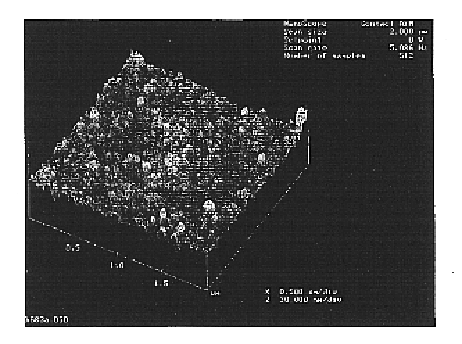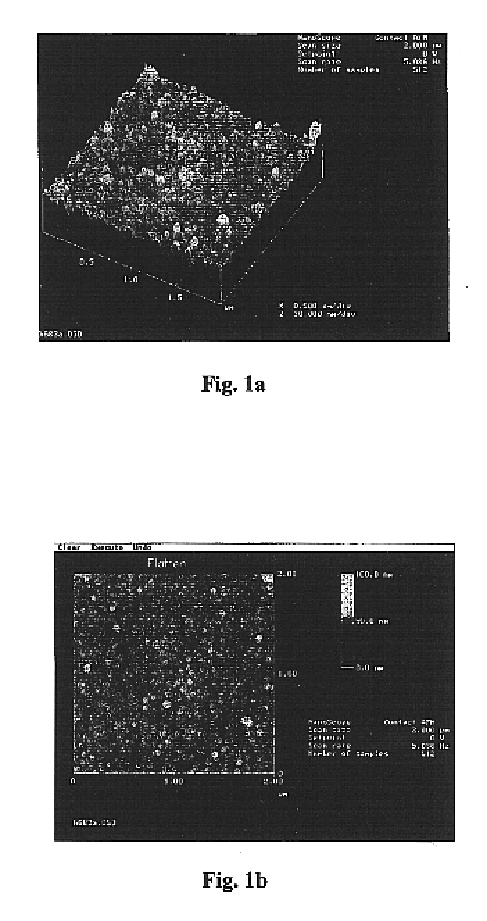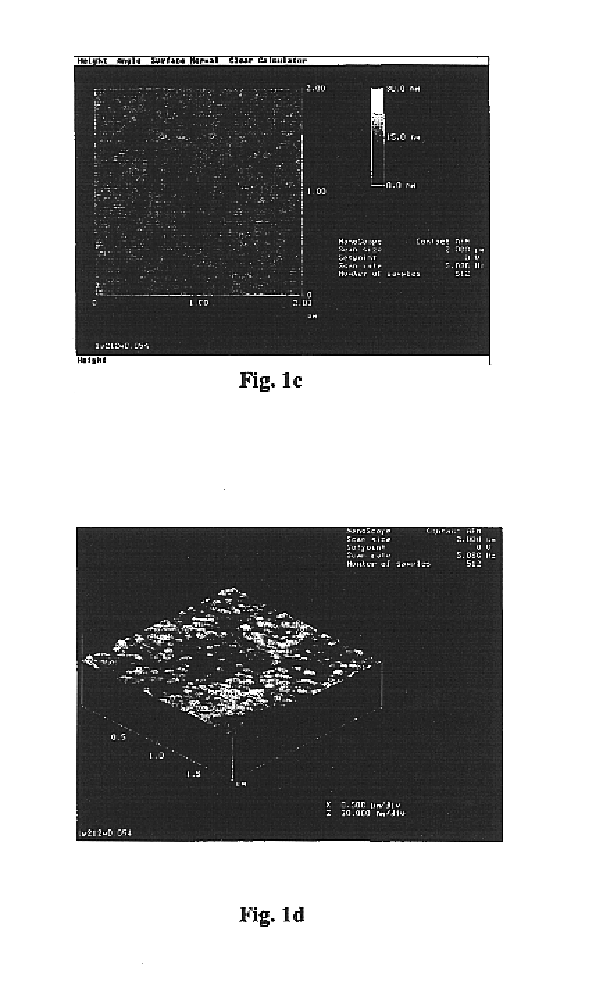Method for preparing mesoporous TiO2 thin films with high photocatalytic and antibacterial activities
a technology of mesoporous tio2 and thin film, which is applied in the field of food industry and medical, can solve the problems of contaminated human health, drawback of post-separation, and important issue of sterilization
- Summary
- Abstract
- Description
- Claims
- Application Information
AI Technical Summary
Benefits of technology
Problems solved by technology
Method used
Image
Examples
example 1
Preparation of Mesoporous TiO.sub.2 Thin Films
10-50 g of copolymer PEO-PPO-PEO (P123, average molecular weight 4,400) was dissolved in 150.0 ml of anhydrous ethanol. The solution was stirred for 1 hour. To the solution was added titanium isopropoxide (28.4 ml) and acetyl acetone (10.0 ml). Resultant solution was stirred for 2 hours. Water (1.8 ml) was added to the solution, and the solution was stirred for 1 hour to allow formation of a stable, homogenous and transparent sol-gel solution in light orange. The composition of prepared TiO.sub.2 sol-gel solution was shown in Table 1.
The TiO.sub.2 thin film on a quartz glass was prepared by dip coating in the above TiO.sub.2 sol-gel solution. The withdrawal speed was controlled at 6 mm / s. The film coated on the quartz glass was dried at 100.degree. C. for 60 minutes, then calcined in a muffle roaster at 500.degree. C. for 1 hour before cooled to the room temperature to obtain mesoporous TiO.sub.2 thin films with different porous sizes an...
example 2
Mesoporous TiO.sub.2 thin films were prepared in the same manner as in Example 1 with the exception of calcination temperature. In this Example, the TiO.sub.2 thin film was calcined at 300.degree. C., 700.degree. C. and 900.degree. C. for 1 hour in the muffle roaster, respectively. Effects of the calcination temperature on the surface area and other physical properties of the mesoporous TiO.sub.2 thin film are shown in Table 3 and Table 8, respectively. As shown in Table 8, mesoporous TiO.sub.2 thin films calcined at the temperature ranging from 500.degree. C. to 700.degree. C. show higher photocatalytic activities, and the mesoporous TiO.sub.2 thin film calcined at 700.degree. C. shows the highest photocatalytic activity. This is primarily because the mesoporous TiO.sub.2 thin film calcined at 700.degree. C. is composed of both the anatase and rutile phases. In general, TiO.sub.2 photocatalyst consisting of such two phases favors the separation of photo-generated electron and hole ...
example 3
A mesoporous TiO.sub.2 thin film coated on the inner surface of a glass container for fish was prepared in the same manner as in Example 1. An ultraviolet lamp with lower power was set inside the glass container. Water injected from the bottom of the glass container was allowed to contact UV irradiated mesoporous TiO.sub.2 thin film. The concentrations of E-coli and comma bacillus in water before and after photocatalytic treatment were shown in Table 9.
From Table 9, more than 99% of E-coli and comma bacillus were killed shortly with the mesoporous TiO.sub.2 thin film under UV illumination. This example evidences that the mesoporous TiO.sub.2 thin film is an efficient photocatalyst for killing bacteria and viruses in water.
PUM
| Property | Measurement | Unit |
|---|---|---|
| temperature | aaaaa | aaaaa |
| molar concentration | aaaaa | aaaaa |
| molar concentration | aaaaa | aaaaa |
Abstract
Description
Claims
Application Information
 Login to View More
Login to View More - R&D
- Intellectual Property
- Life Sciences
- Materials
- Tech Scout
- Unparalleled Data Quality
- Higher Quality Content
- 60% Fewer Hallucinations
Browse by: Latest US Patents, China's latest patents, Technical Efficacy Thesaurus, Application Domain, Technology Topic, Popular Technical Reports.
© 2025 PatSnap. All rights reserved.Legal|Privacy policy|Modern Slavery Act Transparency Statement|Sitemap|About US| Contact US: help@patsnap.com



